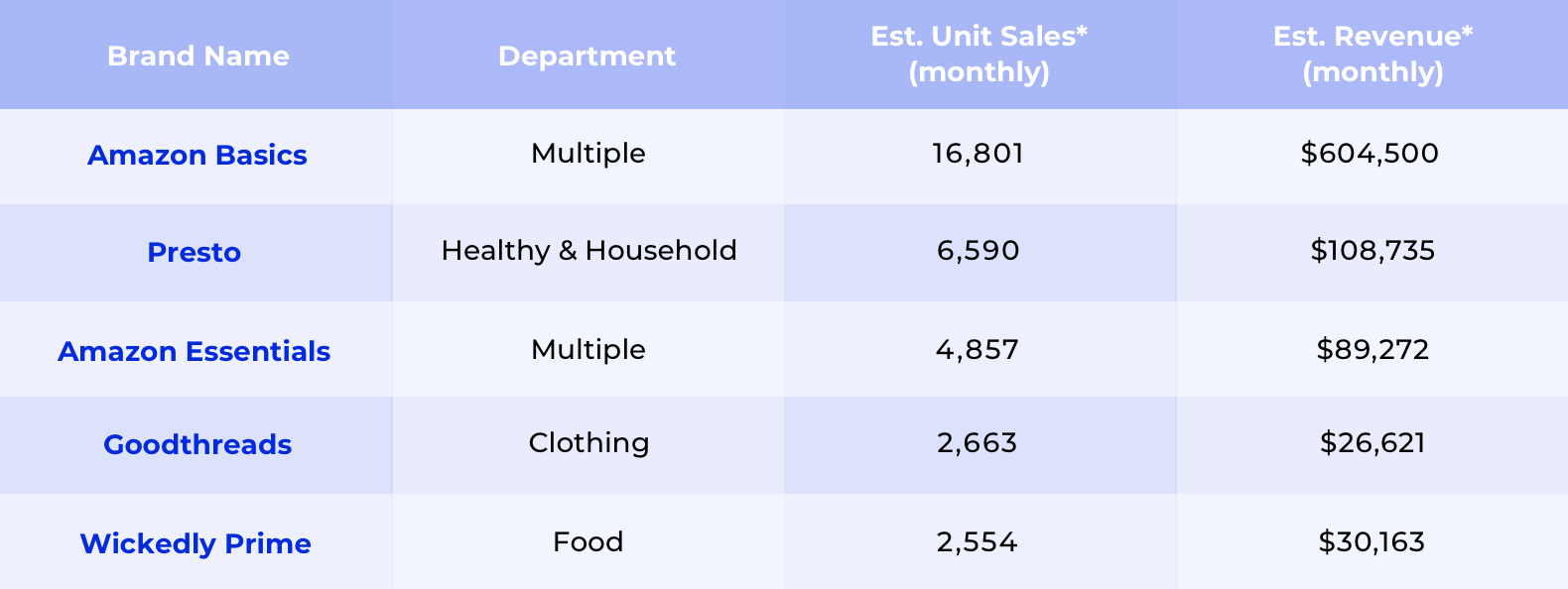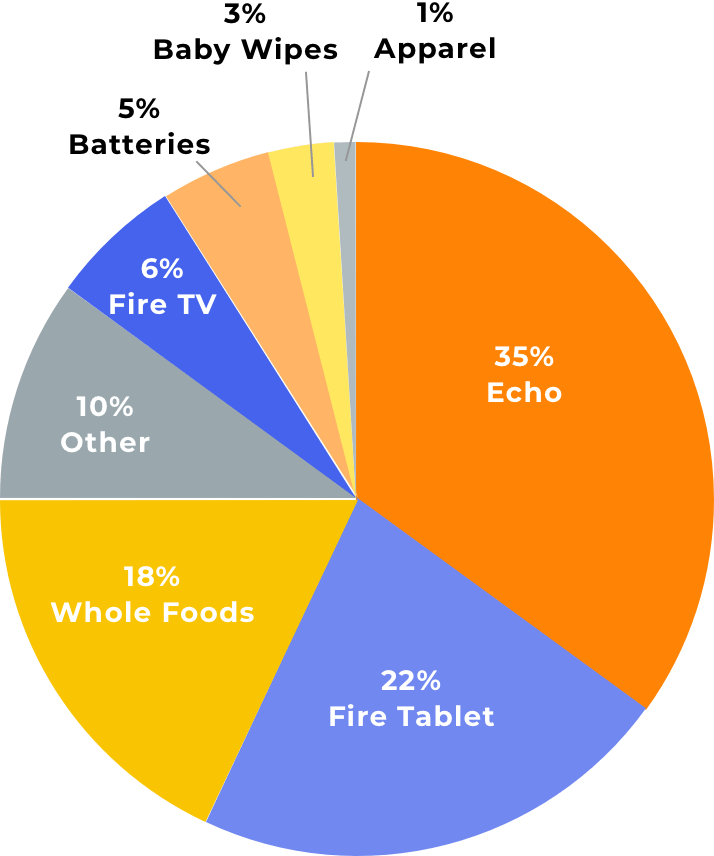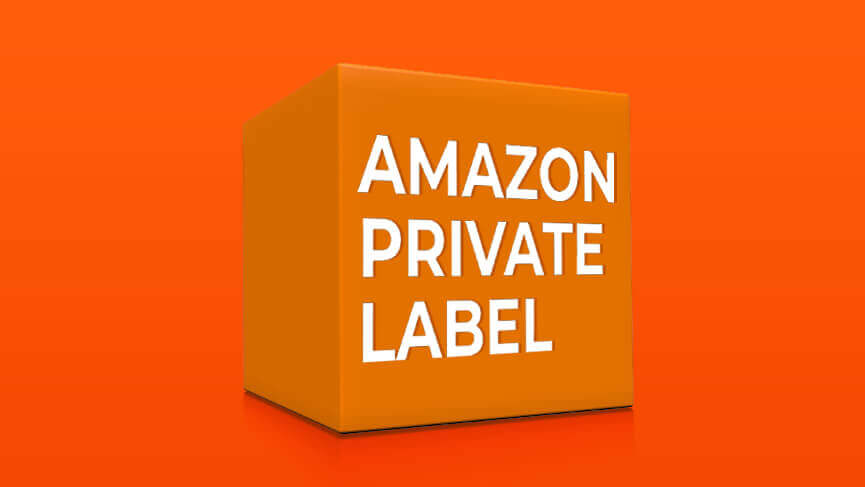Think back to before you ever thought to start selling on Amazon. There’s a pretty good chance you were an Amazon shopper first. And whether you were aware of it or not, several of your purchases were being made from third-party sellers. Except when they weren’t.
Enter the more than 100 private label brands by Amazon. Over the last decade, Amazon has taken a piece of their own pie by selling products in several different categories under several different brand names. Many of which don’t include “Amazon” in the brand name, and therefore hiding from your potential judgment. They started selling their own private label brands in 2007, and have increased their presence at an alarmingly fast rate over the last couple of years.
What are Amazon’s private label brands?
If you’re like us at Jungle Scout, you might not be a stranger to Amazon brands at all. AmazonBasics iPhone charger? Own it. AmazonBasics batteries? Wayyyy cheaper than any other commercial brand out there. Amazon cargo shorts for men? Well, we might not go that far…
The fact is, whether you’re entering the Amazon FBA marketplace as a first-time seller or even as an experienced seller launching your 100th product, you may very well be competing against the almighty Amazon. And we have a lot of questions about that. A. LOT.
Our first thoughts immediately went to fairness. Is Amazon playing by the same rules? How much are they actually profiting from these brands? Are they expanding into categories that could potentially hurt third-party sellers like us and our users? These are questions we needed to be answered to know if we’re playing on a level field.
So we decided to use our tools to investigate a bit further. We estimated sales for top products by each private label brand for 2018, looked at which product lines and categories are growing the quickest, and tried to predict a few moves Amazon might try to make in the coming years.
This is what we found out:
What are Amazon’s Most Successful Private Label Brands?

Amazon’s Private Label Sales

What Kind of Conclusions Are We Drawing from This?
For starters, we can see a few different business models at work with Amazon’s private label brands:
- The first business model relates to Amazon’s electronics – its Kindle, Echo, and Fire brands. These products are catalysts for digital sales and content. Which, strictly speaking as sellers ourselves, we don’t advocate entering into those categories. Electronics are tricky to navigate. There are more manufacturing challenges, potential patent issues, and they would most likely fall outside of our $25-50 retail price sweet spot. Plus, you’d be running up against some big-name brand competitors. As far as we can tell, this corner of the Amazon private label brands business would have little effect on third-party sellers.
- The second business model relates to Amazon’s Essentials and Basics line. Using their competitive pricing and logistics, Amazon can easily undercut competitors even if it means a small profit loss. As we mentioned earlier, despite big name-brand competitors, Amazon’s hard-to-beat prices for items like batteries surpasses any brand association for shoppers. Product niches with dominating competitor brands are also categories we recommend steering clear of, so again, no worries here.
- The third business model is in “hard to sell online” items such as furniture, women’s clothing, and home decor. With the introduction of new technology like Amazon Scout and Amazon’s Prime Wardrobe program, it seems that Amazon is attempting to “crack the code” to selling low-conversion products online to overtake brick-and-mortar retailers. Recently, Amazon added a bed frame private label brand and a high-end jewelry brand, giving further evidence to this conclusion.
New Amazon Shopping Features:
Amazon Scout:
This is a visual shopping experience that uses images only to help shoppers find what they are looking for without using the traditional search bar method. Shoppers give a thumbs up or down to each photo while the algorithm works to hone in on the right product based on your responses.
Amazon Prime Wardrobe:
Amazon is solving several shopping dilemmas at once: fitting room lines, limited selection, store crowds, etc. With the introduction of Amazon Prime Wardrobe, consumers can fill a box with clothing, shoes, and accessories. It ships for free and you pay zero up front. You can try on everything in the comfort of your home and return what you don’t want. Note, this is for Prime members only.
When we take a step back and look at these business models at work, they don’t seem to have any direct effect on the selling practices we advocate for third-party sellers. In fact, brick-and-mortar stores like Target and Walmart stand to lose the most in terms of market share.
For third-party sellers, only those who operate in high-volume, low-margin items (batteries, cell phone cables) should show some concern as Amazon has shown a distinct advantage in those areas. However, for low-volume products with low-demand (500 units per month or less), third-party sellers should be fine as Amazon appears to only sell high-demand/high-competition products. Basically the opposite of the high demand/low competition niches we seek out.
In addition, as Amazon continues to expand and convert new shoppers into Prime Members, Amazon will bring more and more traffic to their site, increasing the opportunity for third-party sellers to get in front of more customers. A win for us!
What can we expect from Amazon private label brands?
We can expect Amazon to improve and test its technology in regard to selling “hard to sell items” online. They will continue to add more high-end, low-conversion products online, possibly adding items like their own line of major appliances, high-priced home decor, and possibly even automobiles.
Amazon has also subtly begun a new Amazon Accelerator Program to bring manufacturers into the family via “Our Brands.” This initiative gives manufacturers the opportunity to create products directly for Amazon’s collection of private label brands and bypass third-party sellers. Whether this new tactic will potentially affect FBA sellers remains to be seen.
Is Amazon still growing?
Yes, very much so. Their push for private label products and subsequent experimenting with new shopping features looks like another step in Amazon’s journey. And if their job openings are any indication, calls for a Sr. Product Manager of Private Brands and Private Brand leaders all point to continued expansion in the private label department.
Amazon might not expect to profit on any of its private label brands for a long time, similar to how they did not try to earn a profit when starting with used books and toys in the late ‘90s/early ‘00s. But they are setting themselves up in a prime position to take over segments of the marketplace should any of their brands take off. And it’s likely Amazon will continue to experience staggering YOY growth as it continues to experiment and reinvest in itself.
Who should be most concerned with Amazon’s growth?
Brick-and-mortar retailers that rely on their own private label products should have the biggest concern for Amazon’s growth. Wells Fargo even predicts that Amazon will dethrone Walmart this year as the number one retailer of apparel. Hard to believe, but gross sales are projected to surpass $30 billion in apparel for 2018. Amazon is now dominating the online apparel retail world with 35% of the market. That said, clothing and apparel is a category we tend to look past in favor of other high-performing categories with far more private label opportunities.
Right now, Amazon’s private label products only account for a small percentage of their total sales. And they’re an even smaller percentage of overall national retail sales. Which we could see double or even triple in size over the next year. If Amazon were to take only 24% of the retail market, major retailers would not be able to compete. Luckily, our community of FBA sellers and those just joining us aren’t trying to compete with the Targets and Walmarts of the retail world.
Amazon still has the door wide open for third-party sellers to take advantage of niche categories they haven’t even touched. Any player can still enter the game, as long as you keep an eye on the one making the rules.
[1038 Niches ebook CTA]
 2 Comments
2 Comments
2 comments on “Amazon Private Label Brands – What Do They Mean for FBA Sellers?”
Hi, Your Views are awesome! But It’s only applicable to US Marketplace. In Indian Market Place there is a Seller called Cloudtail a joint vendor of Amazon. Cloudtail is nailing the Indian Marketplace by selling in all category almost more than 90 % of the total products. What are your tips for these ??
Hey Kadar,
That probably means that those particular ASINS are not ranking for any keywords.